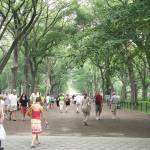Mangrove restoration in Kenya's Gazi Bay
2004 CE • Kenya
"The village of Gazi Bay on Kenya’s coast, just 55 kilometres south of bustling Mombasa and tucked away from the country’s well-trodden tourism circuit, has gained traction in recent years as a model for restoring and tending carbon-sucking mangrove trees that now crowd its bright green shoreline. Nestled between sandy beaches, still waters and coconut palms, the Mikoko Pamoja project – Swahili for “mangroves together” – has for nearly a decade quietly plodded away, conserving over 100 hectares of mangroves while simultaneously planting new seedlings. About 4,000 new mangroves are planted each year, steadily swelling Gazi Bay’s forests. These marine ecosystems capture more carbon dioxide than typical terrestrial forests, making them attractive funding prospects for faraway governments and businesses looking to offset their greenhouse gas emissions. While carbon offsets receive a mixed response from environmentalists, the source of consistent funding has sustained livelihoods of those involved in the project and surrounding coastal villages . . . Fisherfolk casting nets in nearby shallow waters have seen an abundance of species return to the mangrove-laden shores, now a breeding ground for fish flourishing in the expanded habitat. And project leaders hail the benefits of cleaner air for people who live in or near the forests . . ."
Brian Inganga, "Green growth: Mangrove restoration reaping rewards in Kenya," Borneo Bulletin, June 29, 2022.
Image: GRID-Arendal via Flickr, Attribution-NonCommercial-ShareAlike 2.0 Generic (CC BY-NC-SA 2.0)


Learn about Maya Lin’s fifth and final memorial: a multi-platform science based artwork that presents an ecological history of our world - past, present, and future.

Discover ecological histories and stories of former abundance, loss, and recovery on the map of memory.

Learn how we can reduce our emissions and protect and restore species and habitats – around the world.

See how art can help us rethink the problems we face, and give us hope that each one of us can make a difference.

Help make a global memorial something personal and close to home. Share your stories of the natural world.


